Aberrant methylation and expression of TNXB promote chondrocyte apoptosis and extracullar matrix degradation in hemophilic arthropathy via AKT signaling
- PMID: 38819423
- PMCID: PMC11142640
- DOI: 10.7554/eLife.93087
Aberrant methylation and expression of TNXB promote chondrocyte apoptosis and extracullar matrix degradation in hemophilic arthropathy via AKT signaling
Abstract
Recurrent joint bleeding in hemophilia patients frequently causes hemophilic arthropathy (HA). Drastic degradation of cartilage is a major characteristic of HA, but its pathological mechanisms has not yet been clarified. In HA cartilages, we found server matrix degradation and increased expression of DNA methyltransferase proteins. We thus performed genome-wide DNA methylation analysis on human HA (N=5) and osteoarthritis (OA) (N=5) articular cartilages, and identified 1228 differentially methylated regions (DMRs) associated with HA. Functional enrichment analyses revealed the association between DMR genes (DMGs) and extracellular matrix (ECM) organization. Among these DMGs, Tenascin XB (TNXB) expression was down-regulated in human and mouse HA cartilages. The loss of Tnxb in F8-/- mouse cartilage provided a disease-promoting role in HA by augmenting cartilage degeneration and subchondral bone loss. Tnxb knockdown also promoted chondrocyte apoptosis and inhibited phosphorylation of AKT. Importantly, AKT agonist showed chondroprotective effects following Tnxb knockdown. Together, our findings indicate that exposure of cartilage to blood leads to alterations in DNA methylation, which is functionally related to ECM homeostasis, and further demonstrate a critical role of TNXB in HA cartilage degeneration by activating AKT signaling. These mechanistic insights allow development of potentially new strategies for HA cartilage protection.
Keywords: DNA methylation; cartilage degeneration; cell biology; chondrocyte apoptosis; genetics; genomics; hemophilic arthropathy; human; mouse; tenascin XB.
© 2024, Chen, Zeng et al.
Conflict of interest statement
JC, QZ, XW, RX, WW, YH, QS, WY, PW, PT, HJ No competing interests declared, DC Reviewing editor, eLife
Figures
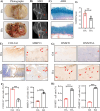

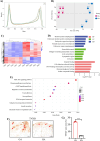



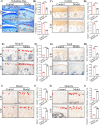

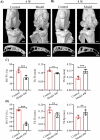
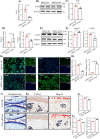


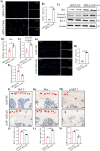

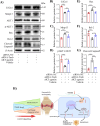



Update of
- doi: 10.1101/2023.12.11.570472
- doi: 10.7554/eLife.93087.1
- doi: 10.7554/eLife.93087.2
Similar articles
-
PRMT1 promotes extracellular matrix degradation and apoptosis of chondrocytes in temporomandibular joint osteoarthritis via the AKT/FOXO1 signaling pathway.Int J Biochem Cell Biol. 2021 Dec;141:106112. doi: 10.1016/j.biocel.2021.106112. Epub 2021 Oct 27. Int J Biochem Cell Biol. 2021. PMID: 34715362
-
DNA methyltransferase 3 beta mediates the methylation of the microRNA-34a promoter and enhances chondrocyte viability in osteoarthritis.Bioengineered. 2021 Dec;12(2):11138-11155. doi: 10.1080/21655979.2021.2005308. Bioengineered. 2021. PMID: 34783292 Free PMC article.
-
CHMP5 attenuates osteoarthritis via inhibiting chondrocyte apoptosis and extracellular matrix degradation: involvement of NF-κB pathway.Mol Med. 2024 Apr 25;30(1):55. doi: 10.1186/s10020-024-00819-6. Mol Med. 2024. PMID: 38664616 Free PMC article.
-
[Destruction of the articular cartilage in osteoarthritis].Clin Calcium. 2013 Dec;23(12):1705-13. Clin Calcium. 2013. PMID: 24292524 Review. Japanese.
-
Role of tenascin-C in articular cartilage.Mod Rheumatol. 2018 Mar;28(2):215-220. doi: 10.1080/14397595.2017.1349560. Epub 2017 Jul 19. Mod Rheumatol. 2018. PMID: 28722504 Review.
References
MeSH terms
Substances
Grants and funding
LinkOut - more resources
Full Text Sources
Medical
Miscellaneous

